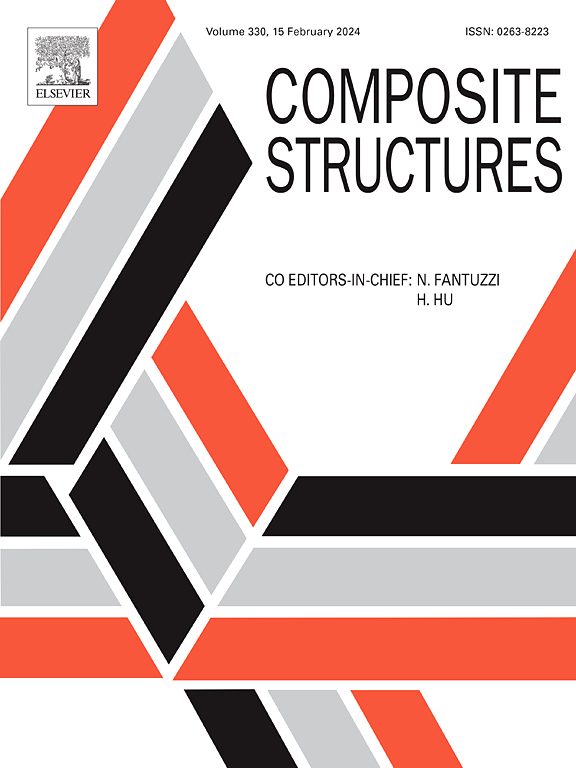Optimization of assembly parameters for composite bolted joints aiming at time-varying bearing reliability improvement
IF 6.3
2区 材料科学
Q1 MATERIALS SCIENCE, COMPOSITES
引用次数: 0
Abstract
Bolted connections are a common assembly form for composite structures. Different assembly parameters may lead to multiply differences in the strength of composite bolted joints. Low structural reliability is currently a key bottleneck that restricts the performance improvement of composite devices. In this study, the uncertainty characteristics of the washer structure parameters, interface friction coefficients and tightening process parameters under different machining methods, interface treatments and tightening control methods are analyzed through batch experimental tests. Then the data set with assembly parameters as input and structural bearing limit as output is constructed through batch virtual tightening- tensile experiments. The data-driven algorithm is used to construct a fast prediction model of the bearing limit, and the time-varying uncertainty analysis of the bearing limit and the bearing reliability evaluation method are established. Finally, the method is used to realize the bearing reliability improvement by regulating the uncertainty to optimize the assembly parameters. The uncertainties in the assembly parameters of the composite bolted joints obtained through experimental tests in this study can provide a reference for related researches. The established data-driven fast prediction model of bearing limits provides an effective tool for statistical analysis of bearing limits and bearing reliability assessment.
面向时变轴承可靠性提高的复合螺栓连接装配参数优化
螺栓连接是复合材料结构常用的一种装配形式。不同的装配参数会导致复合螺栓连接强度的多重差异。结构可靠性低是目前制约复合材料器件性能提升的关键瓶颈。通过批量试验,分析了不同加工方式、界面处理方式和拧紧控制方式下垫圈结构参数、界面摩擦系数和拧紧工艺参数的不确定性特征。然后通过批量虚拟拉紧实验,构建了以装配参数为输入,结构承载极限为输出的数据集。采用数据驱动算法构建了轴承极限快速预测模型,建立了轴承极限时变不确定性分析和轴承可靠性评估方法。最后,利用该方法通过调节装配参数的不确定性来实现轴承可靠性的提高。本研究通过试验试验获得的复合材料螺栓连接装配参数的不确定性可为相关研究提供参考。建立了数据驱动的轴承极限快速预测模型,为轴承极限统计分析和轴承可靠性评估提供了有效的工具。
本文章由计算机程序翻译,如有差异,请以英文原文为准。
求助全文
约1分钟内获得全文
求助全文
来源期刊

Composite Structures
工程技术-材料科学:复合
CiteScore
12.00
自引率
12.70%
发文量
1246
审稿时长
78 days
期刊介绍:
The past few decades have seen outstanding advances in the use of composite materials in structural applications. There can be little doubt that, within engineering circles, composites have revolutionised traditional design concepts and made possible an unparalleled range of new and exciting possibilities as viable materials for construction. Composite Structures, an International Journal, disseminates knowledge between users, manufacturers, designers and researchers involved in structures or structural components manufactured using composite materials.
The journal publishes papers which contribute to knowledge in the use of composite materials in engineering structures. Papers deal with design, research and development studies, experimental investigations, theoretical analysis and fabrication techniques relevant to the application of composites in load-bearing components for assemblies, ranging from individual components such as plates and shells to complete composite structures.
 求助内容:
求助内容: 应助结果提醒方式:
应助结果提醒方式:


